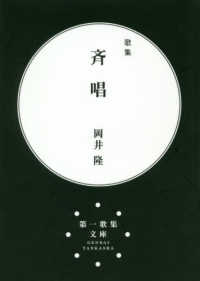Full Description
This book explores the ways in which dress has been influential in the political agendas and self-representations of politicians in a variety of regimes from democratic to authoritarian. Arguing that dress is part of 'hard core' politics, it shows how dress has been crucial to the constructions of nationhood and national identities in both Asia and the Americas. Since dress has been a marker of identity and status, chapters engage with the gendering of the politics of dress, discussing how women have become bearers and wearers of 'national tradition' and how men and women's dress reflect their political positions in the nation-state. It examines the magical power of cloth, the meanings of batik and design, the holy status of uncut cloth versus cut cloth, and the quaint combination of non-Western with Western attire. This collection of pioneering essays fills a vacuum in the largely Eurocentric field of dress studies, demanding that attention be paid to Asia and the Americas as major sites of vestimentary creativity.
Contents
Transnational Flows & the Politics of Dress in Asia & the Americas; Gender, Nation & the Politics of Dress in Twentieth-Century Philippines; Dressing for Power: Scholars' Robes, School Uniforms & Military Attire in China; Refashioning Civilisation: Dress & Bodily Practice in Thai Nation-Building; Gender, Citizenship & Dress in Modernising Japan; Identity, Nation & Islam: A Dialogue about Men's & Women's Dress in Indonesia; "Dressed in a Little Brief Authority": Clothing the Body Politic in Burma; Power Dressing on the Prairies: The Grammar of Blackfoot Leadership Dress, 1750-1930; Nationalism & National Dress in Spanish America; Refashioning the Inca: Costume, Political Power & Identity in Late Bourbon Peru; Wigs, Weapons, Tattoos & Shoes: Getting Dressed in Colonial Amazonia & Brazil; Fabricating Specimen Citizens: Nation Building in Nineteenth-Century Mexico; Urban Expressions of Solidarity: Fashioning Citizenship in Argentina; Index.








